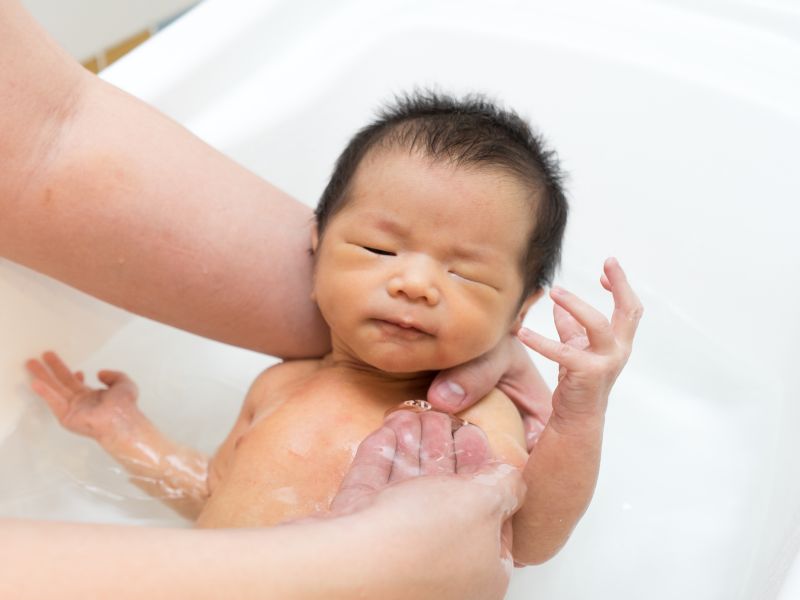Bathing a Baby Less Scary Than It Sounds

FRIDAY, Aug. 9, 2019 (HealthDay News) -- Every parent remembers the first time they bathed their newborn, terrified they might accidentally drop or harm their tiny bundle of joy.
But one dermatologist says the task is easy if parents follow some basic steps.
"While it may seem intimidating at first, bathing your baby is simple and only needs to happen two to three times a week, as long as the diaper area is thoroughly cleaned during each diaper change," according to Dr. Kalyani Marathe, a dermatologist in Washington, D.C.
"The first thing to remember is to start off with sponge baths until your baby's umbilical cord stump falls off and heals," Marathe said in an American Academy of Dermatology news release.
For a sponge bath, you'll need a bowl of lukewarm water, a washcloth and a mild, fragrance-free baby soap. Lay your baby down on a comfortable, flat surface. Keep your baby warm by wrapping him or her in a towel and only exposing the part of the body that you're washing. Keep one hand on your baby at all times.
Dip the washcloth into the water and gently wipe your baby's face and scalp. It's safe to gently clean over the baby's soft spots. Remember to wash neck creases and behind the ears, Marathe said.
Clean the rest of your baby's body. Soap is needed only when washing dirty areas, typically the diaper area and the neck. Rinse off soap afterwards.
"Once your baby's umbilical cord stump falls off, switch to traditional bathing," Marathe said. "However, start slow -- if your baby seems to hate getting a regular bath, revert to the sponge bath method for another week or longer."
For a traditional bath, you can use a sink or small plastic tub. Use lukewarm water and place your baby into the water feet first. Most of the baby's body should be well above the water. Use a washcloth to gently wash your baby's face and scalp. Use baby shampoo once or twice a week to clean your baby's hair.
Clean the rest of your baby's body and use soap only in dirty areas.
"After bathing, immediately wrap your baby in a towel for warmth and consider applying a bland, fragrance-free moisturizer, such as petroleum jelly," Marathe said.
More information
The American Academy of Pediatrics outlines how to prepare for the arrival of your newborn.

The news stories provided in Health News and our Health-E News Newsletter are a service of the nationally syndicated HealthDay® news and information company. Stories refer to national trends and breaking health news, and are not necessarily indicative of or always supported by our facility and providers. This information is provided for informational and educational purposes only, and is not intended to be a substitute for medical advice, diagnosis, or treatment.

